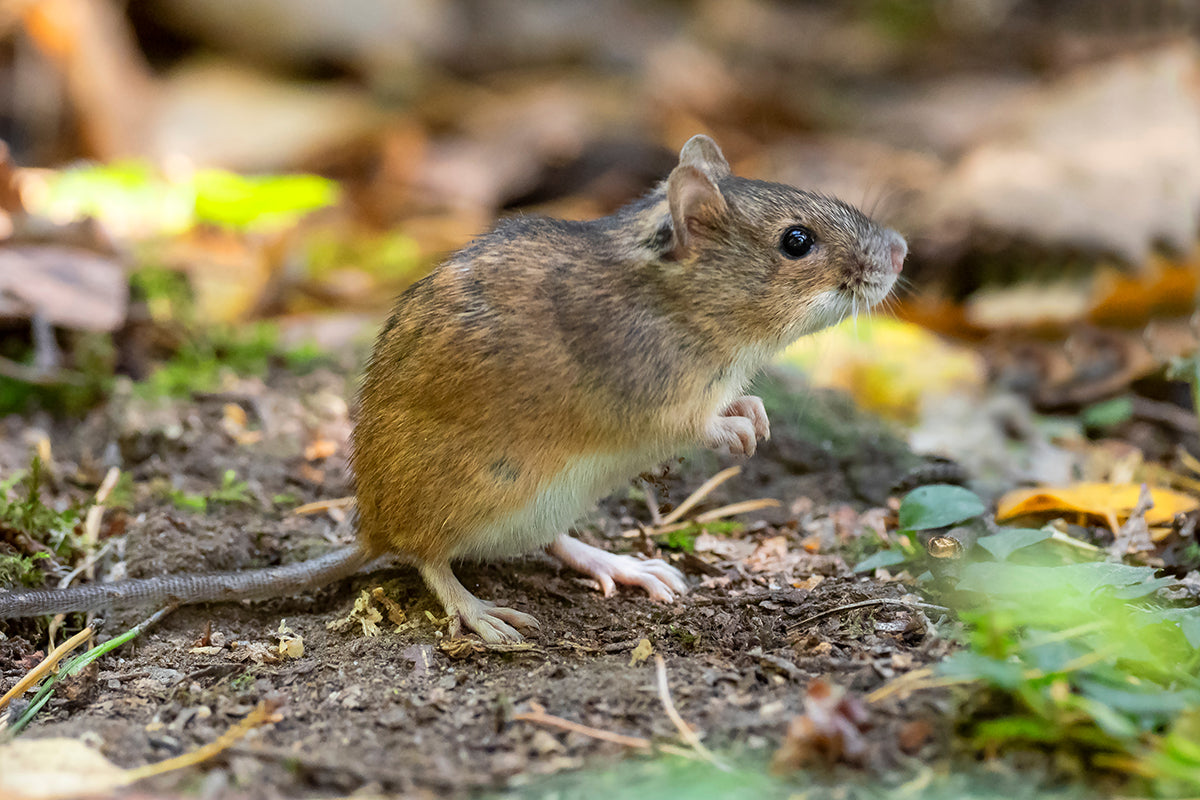Wildlife in the garden - the wood mouse

Discounting voles, shrews, and rats, three types of mice are commonly seen in gardens - the house mouse, the wood mouse, and the yellow necked field mouse. Being in a rural location, Genus HQ is no stranger to these sweet but rather annoying four-legged visitors. We’ve experienced visits from all three species as well as the other common garden rodents such as voles, shrews, and the larger unmissable rats.
The wood mouse (Apodemus sylvaticus) however is probably the mouse we most commonly see in the Genus garden. Native to Europe and northwestern Africa it’s closely related to the yellow-necked mouse, but lacks the distinctive yellow band around the neck, has slightly smaller ears, and is generally smaller in size, typically measuring about 90mm in length. It’s a widely distributed species also known as the long-tailed field mouse, field mouse, common field mouse, or European wood mouse. Wood mice thrive in various habitats including forests, grasslands, and cultivated fields. Predominantly nocturnal and terrestrial creatures, they are prolific burrowers and will often seek shelter in buildings during harsh weather conditions.
Their diet consists mainly of seeds, particularly those from trees such as oak, beech, ash, lime, hawthorn, and sycamore and in plentiful years will transport them back to their nests for storage. Their diet varies throughout the year to include small invertebrates like snails and insects in late spring and early summer, when seeds are scarce. Later in the year, they consume berries, fruits, fungi, and roots. Reports can even be found of wood mice preying on hibernating bats during winter.
To avoid predation themselves, wood mice are mainly active during night time. While foraging, it’s noticed that they place conspicuous objects like leaves and twigs to use as landmarks during exploration. If captured by the tail, a wood mouse can shed its end as an escape mechanism, though it won’t regrow a new one. Despite its name, this species generally prefers hedgerows to woodland. They don’t normally hibernate but during severe winters can enter a torpid state. Common predators include foxes, snakes, weasels, birds of prey, cats, and dogs.
Female wood mice have a gestation period of 25-27 days, producing an average of four young annually. Although that doesn’t sound like a high number the offspring become independent after approximately three weeks and reach sexual maturity after two months, contributing to the successful spread of the species.







